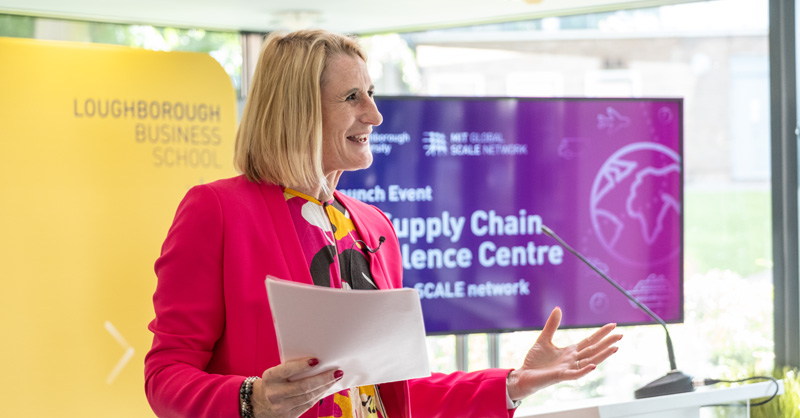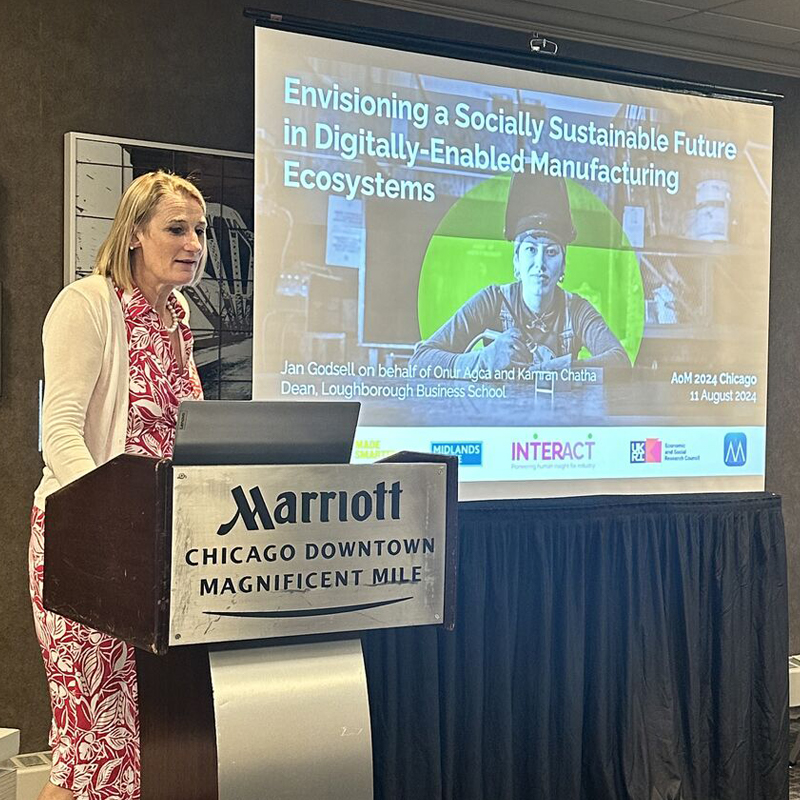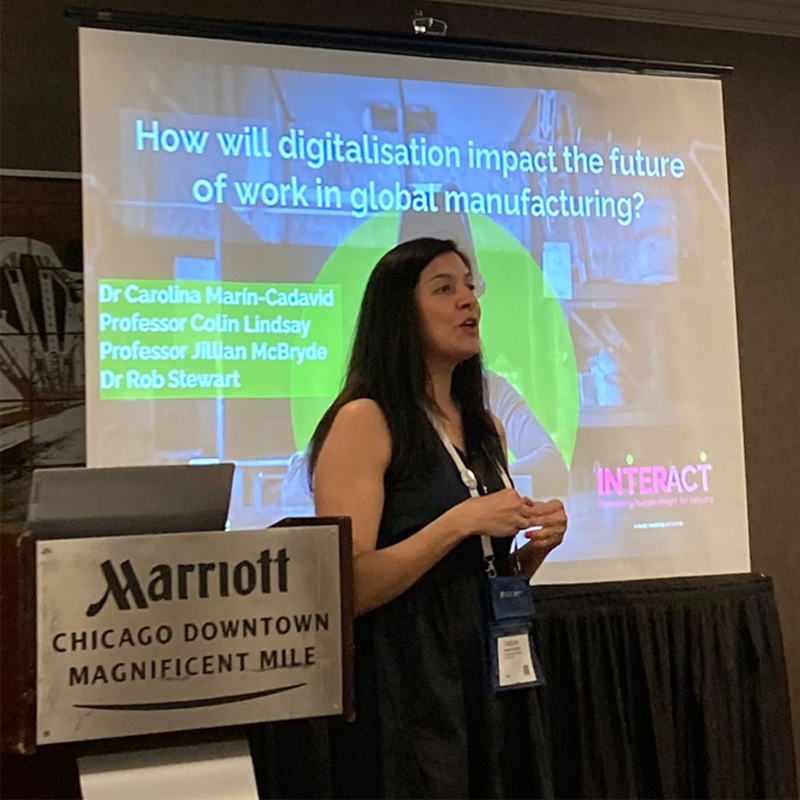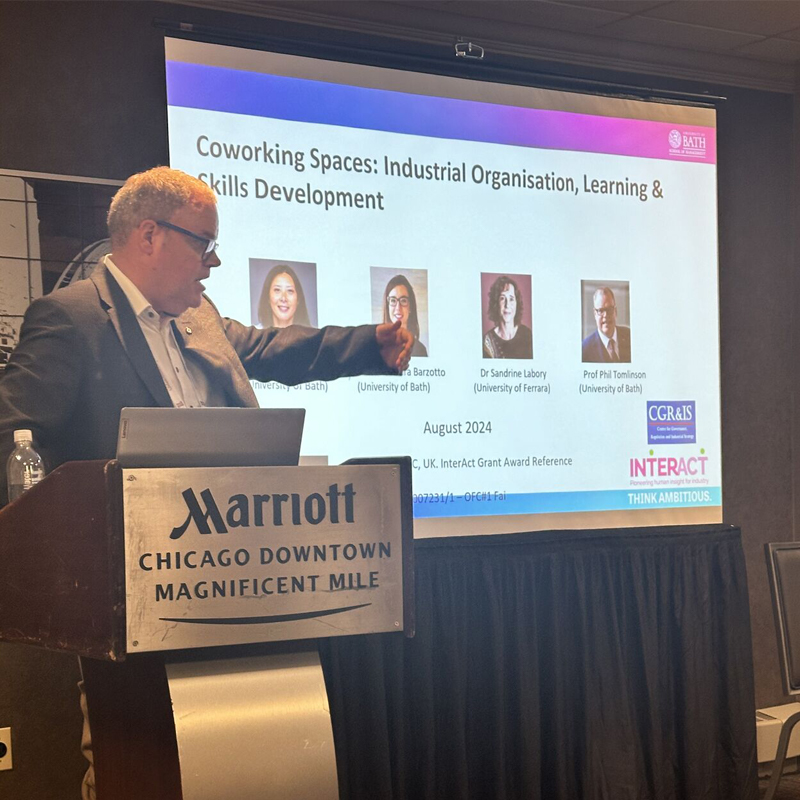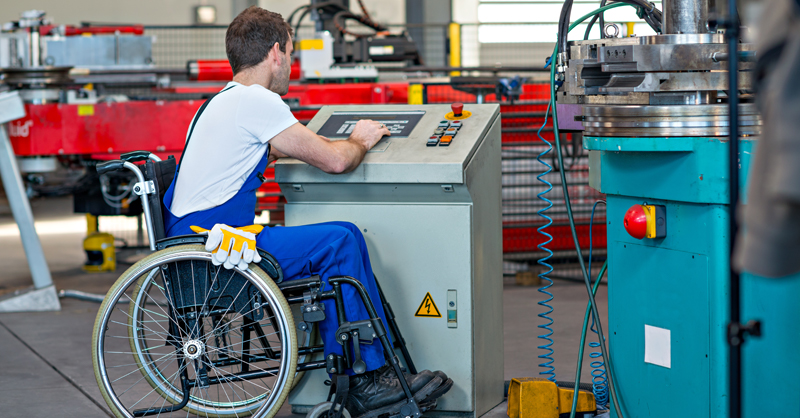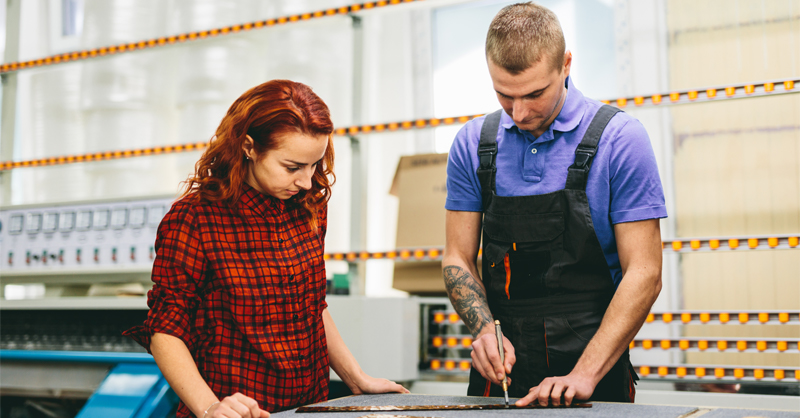Our exciting new project aims to develop a strategy to inform the rebranding of UK digital manufacturing to attract the next generation of talent into UK digital manufacturing careers by 2040.
In May 2023, the team members met at an InterAct research sandpit hosted by Loughborough University, which was held with the aim of developing research projects to accelerate the innovation and diffusion of Industrial Digital Technologies in UK manufacturing.
During the sandpit, it became clear that our interdisciplinary team shared a passion to make UK manufacturing a place that attracts, includes, and supports young talent from diverse backgrounds and mindsets. However, recent research conducted by MAKE UK reports only 2% of the average UK manufacturing workforce is currently below 30 years old [1].
Additionally, a recent InterAct 2023 survey on UK perceptions of manufacturing has found that younger generations identify UK manufacturing as an unattractive brand with uncertain employment prospects which is problematic for attracting ambitious and creative digital talent [2]. These negative perceptions in part could be attributed to older generational memories and experiences of physically demanding manufacturing jobs that fuelled the post-World War II economic recovery. Accounting for the rise of today’s digital labour market [3], these negative perceptions and experiences of UK manufacturing are likely to shape children and grandchildren’s career choices. This all adds up to a generational problem in UK manufacturing which is deep-rooted in the cross-generational experiences of what UK manufacturing once represented and the extensive and diverse career opportunities that are available today and will be realisable the future.
These preliminary findings paint an unsettling picture for UK manufacturing, especially when digital transformation has become a strategic priority for companies [4], industries [5] and countries [6]. At the country-level for example, if the UK is to pursue its levelling-up agenda and overcome its regional [7] and international [8] productivity gaps, then attracting young, digitally literate, and productive workers into well-paid, high-skilled manufacturing careers would seem an intuitive and rational approach. However, academic research continues to report that a major barrier for the digital transformation of older firms in various manufacturing sectors is the legacy of underperforming business models, inefficient workplace practices and traditional organisational structures [9], [10], [11].
These organisational legacies also raise the challenge that new digital competitors – such as the big technology firms and technology start-ups – are perceived to attract younger talent and the career aspirations of Generation Z [12] through creative workplace practices, new organisation designs and innovation cultures.
Therefore, to address this problem, our project intends to co-create the most plausible future scenarios for rebranding UK digital manufacturing to help stakeholders attract the next generation of young talent into manufacturing careers by 2040. As our project is exploratory in design, we will interact with a range of policy makers, educators, employers, and university students to gather insights on how to attract young people into UK digital manufacturing careers by 2040. This will be conducted through six work packages that range from data mining four generations of manufacturing data held by the UK Office for National Statistics to interviews and focus groups with key stakeholders including business owners, industry bodies, technologists, policy makers, educators and students that are passionate about supporting the co-development of UK digital manufacturing.
We will also work with Strategic Innovation Ltd – a technology and innovation consultancy with a passion for sustainability – on a key output which will be the co-creation of a cross-generational map of peoples’ lived experiences of UK manufacturing. This will include both past and present experiences and will visualise potential rebranding opportunities for attracting the next generation of young talent into digital manufacturing careers by 2040.
By providing stakeholders with a visualisation of the future, our project will initiate the development of a strategy for digital manufacturing careers that can play a central role in the UK’s economic and social development at home and overseas by attracting top talent into these roles.
If you or any colleagues would like to participate in our project, please contact Karl Warner, our Principal Investigator at karl.warner@glasgow.ac.uk for further information.
References
[1] MAKE UK (2021) Manufacturing Our Recovery Through Inclusion (https://www.makeuk.org/insights/reports/manufacturing-our-recovery-through-inclusion)
[2] InterAct blog (2023) Future workforces: job quality & perceptions of UK manufacturing
(https://interact-hub.org/2023/05/23/future-workforces-job-quality-perceptions-of-uk-manufacturing/)
[3] Digital Skills & Jobs Europa (2023) The Rise of the Digital Labour Market (2022)
(https://digital-skills-jobs.europa.eu/en/inspiration/research/rise-digital-labour-market-2022)
[4] Sousa-Zomer, T. T., Neely, A., & Martinez, V. (2020). Digital transforming capability and performance: a microfoundational perspective. International Journal of Operations & Production Management, 40(7/8), 1095-1128.
[5] Ciarli, T., Kenney, M., Massini, S., & Piscitello, L. (2021). Digital technologies, innovation, and skills: Emerging trajectories and challenges. Research Policy, 50(7), 104289.
[6] Senna, P. P., Roca, J. B., & Barros, A. C. (2023). Overcoming barriers to manufacturing digitalization: Policies across EU countries. Technological Forecasting and Social Change, 196, 122822.
[7] Office for National Statistics (2023) Regional labour productivity, UK: 2021
(https://www.ons.gov.uk/economy/economicoutputandproductivity/productivitymeasures/bulletins/regionallabourproductivityincludingindustrybyregionuk/2021)
[8] Office for National Statistics (2023) International comparisons of UK productivity (ICP), final estimates: 2021
(https://www.ons.gov.uk/economy/economicoutputandproductivity/productivitymeasures/bulletins/internationalcomparisonsofproductivityfinalestimates/2021)
[9] Warner, K. S., & Wäger, M. (2019). Building dynamic capabilities for digital transformation: An ongoing process of strategic renewal. Long range planning, 52(3), 326-349.
[10] Jones, M. D., Hutcheson, S., & Camba, J. D. (2021). Past, present, and future barriers to digital transformation in manufacturing: A review. Journal of Manufacturing Systems, 60, 936-948.
[11] Ates, A., & Acur, N. (2022). Making obsolescence obsolete: Execution of digital transformation in a high-tech manufacturing SME. Journal of Business Research, 152, 336-348.
[12] Barhate, B., & Dirani, K. M. (2022). Career aspirations of generation Z: a systematic literature review. European Journal of Training and Development, 46(1/2), 139-157.

